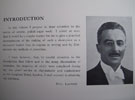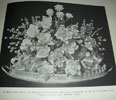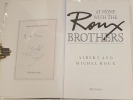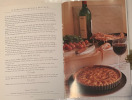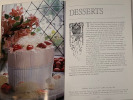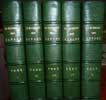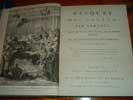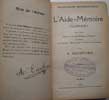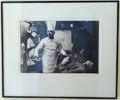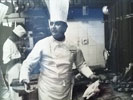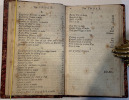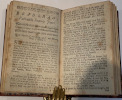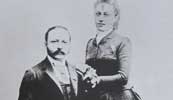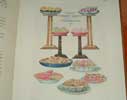Artistic Cookery
ARTISTIC COOKERY. A PRACTICAL SYSTEM SUITED FOR THE USE OF THE NOBILITY AND GENTRY AND FOR PUBLIC ENTERTAINMENTS. WITH EIGHTY ENGRAVED PLATES: BY URBAIN DUBOIS CHEF DE CUISINE OF THEIR MAJESTIES THE KING AND QUEEN OF 'CUISINE-CLASSIQUE' AND 'CUISINE DE TOUS LES PAYS'. -- En ce siecle de vigueur et d'activite fecondes, il est evident, que le bien-etre et le comfort entrent pour une grande part dans les aspirations de l'humanite; car plus les peuples gagnet en intelligence, plus ils devienment gourmets! U.D. LONDON; LONGMANS, GREEN, AND CO. 1870. THE RIGHT OF TRANSLATION IS RESERVED.
FIRST ENGLISH EDITION. Large thick 4to. Paste-downs and end-papers in light yellow, front and back. With 'IW&FS' (International Wine and Food Society) headed bookplate of William Heptinstall, the Chef-Patron of the Fortinghall Hotel, Perthshire. Half-title. [2] 1pp Round engraved head portraits of Wilhelm and Augusta Von Preussen. 1pp Elaborate engraved title page - Artistic DUBOIS Cookery. [1] Title Page. Signature of Urbain Dubois on verso. 2pp Dedication. 3pp Preface. [1] xi-xiv Service of the Table. [1] 2pp Summary and Menu. [2] 1pp Service a' la Russe, engraved plate of a set Dinner Table. xvii- lv Bills of Fare. 1-231. 232-236 Index. 237-244+[1] Advertisements for Dubois's Books. [1] Original clean red cloth binding with original gilt lettering on spine. A very nice copy of the extremely scarce first edition in its original state, with a nice association.
- This volume is the English translation of Dubois' great French classic "La Cuisine Classique". Within the 244 pages are 80 fresh bright copper- engraved plates showing 337 examples of meat, fish and dessert arranged on exquisite serving dishes or stands. The presentation of the food is incredibly grand, ornamental and stylish, including classical, rococco, gothic and oriental and often with almost inedible centre pieces. The decorations place this work in the field of decorative art almost as much as cookery. Dubois spent much of his career as chef to Prince Orloff of Russia and Emperor Wilhelm of Prussia and greatly influenced the courts and great houses of Europe. William Heptinstall was an influential Hotelier, Caterer and Author in the 1950's. He wrote "Hors d'oeuvre & Cold Table" - first edition; 1959.






click on image to enlarge

Antiquarian category
ref number:
11017 
